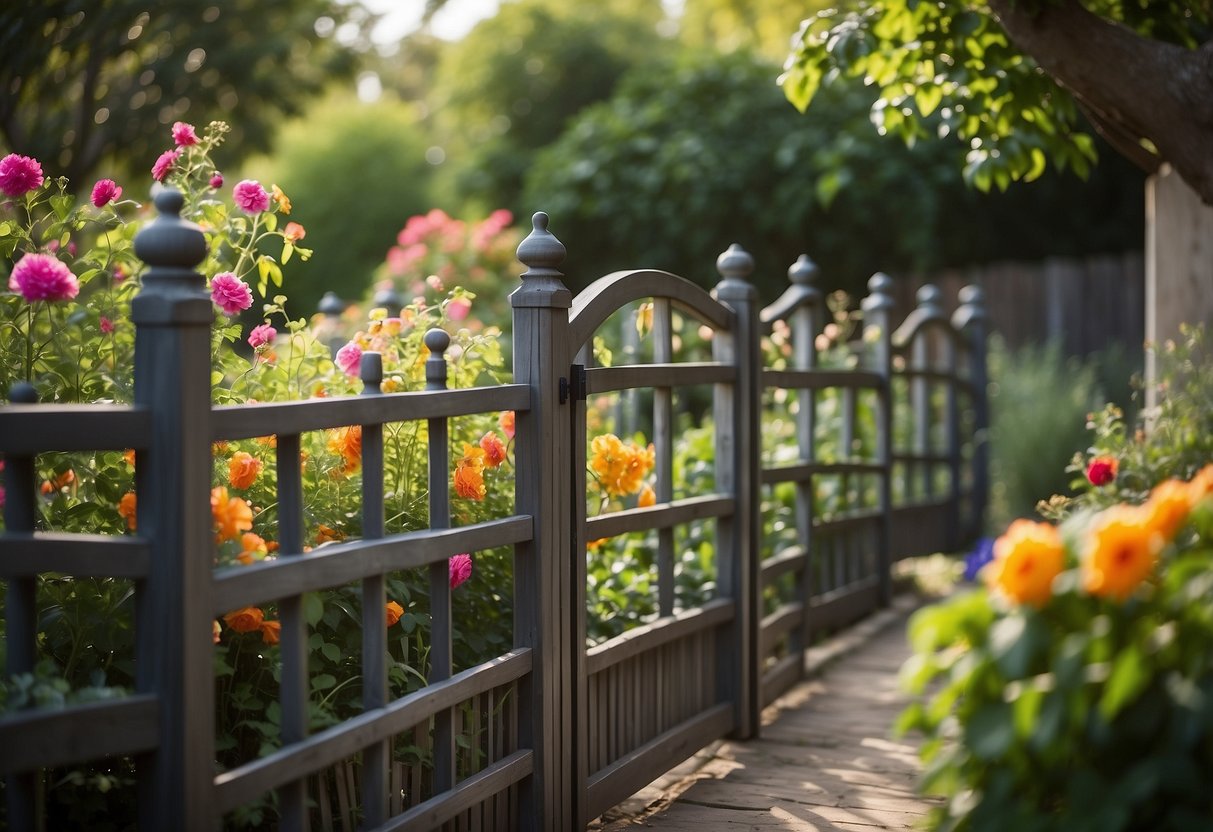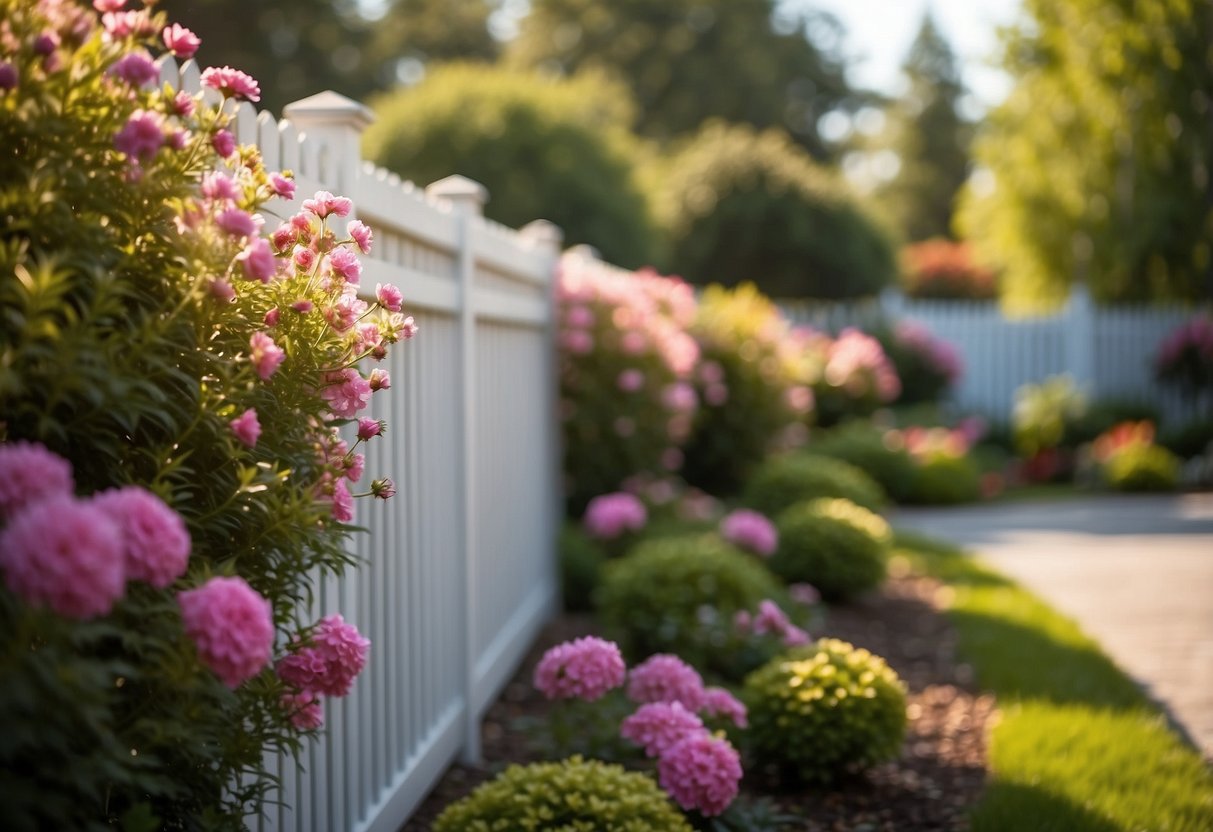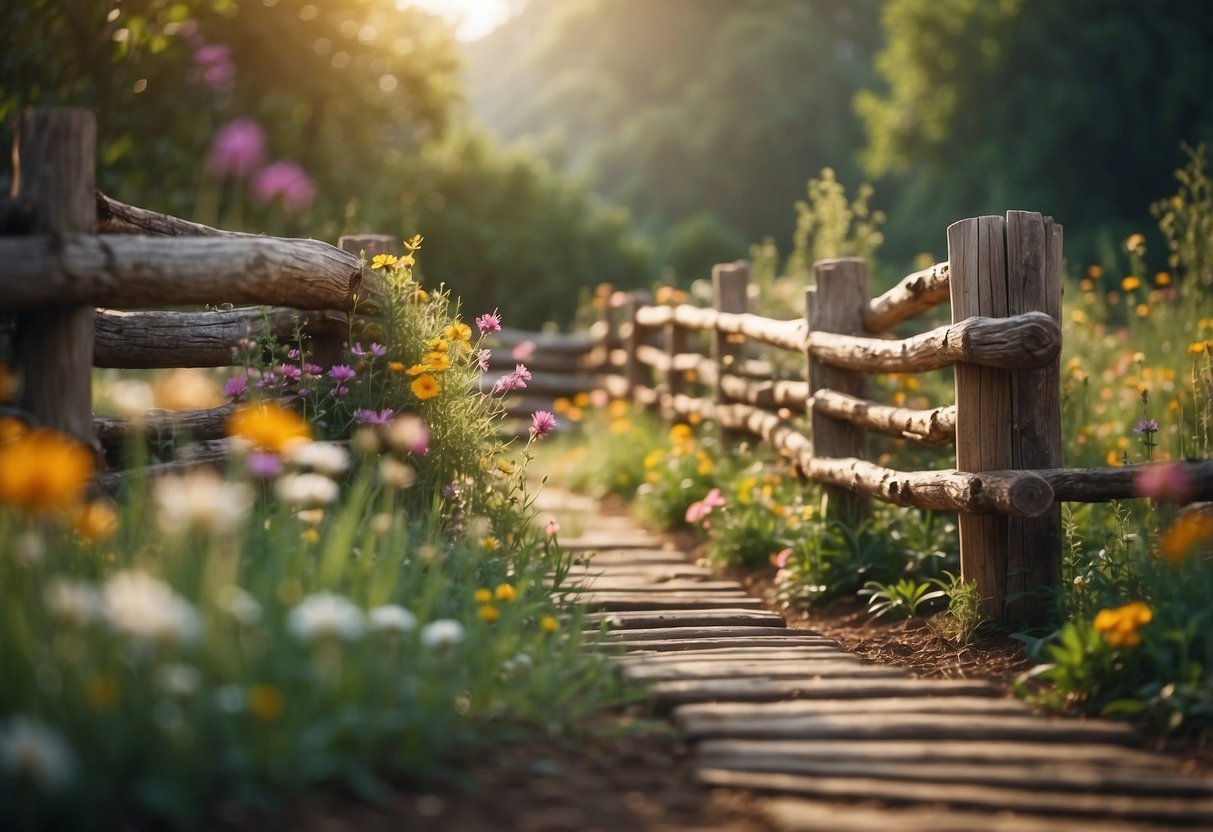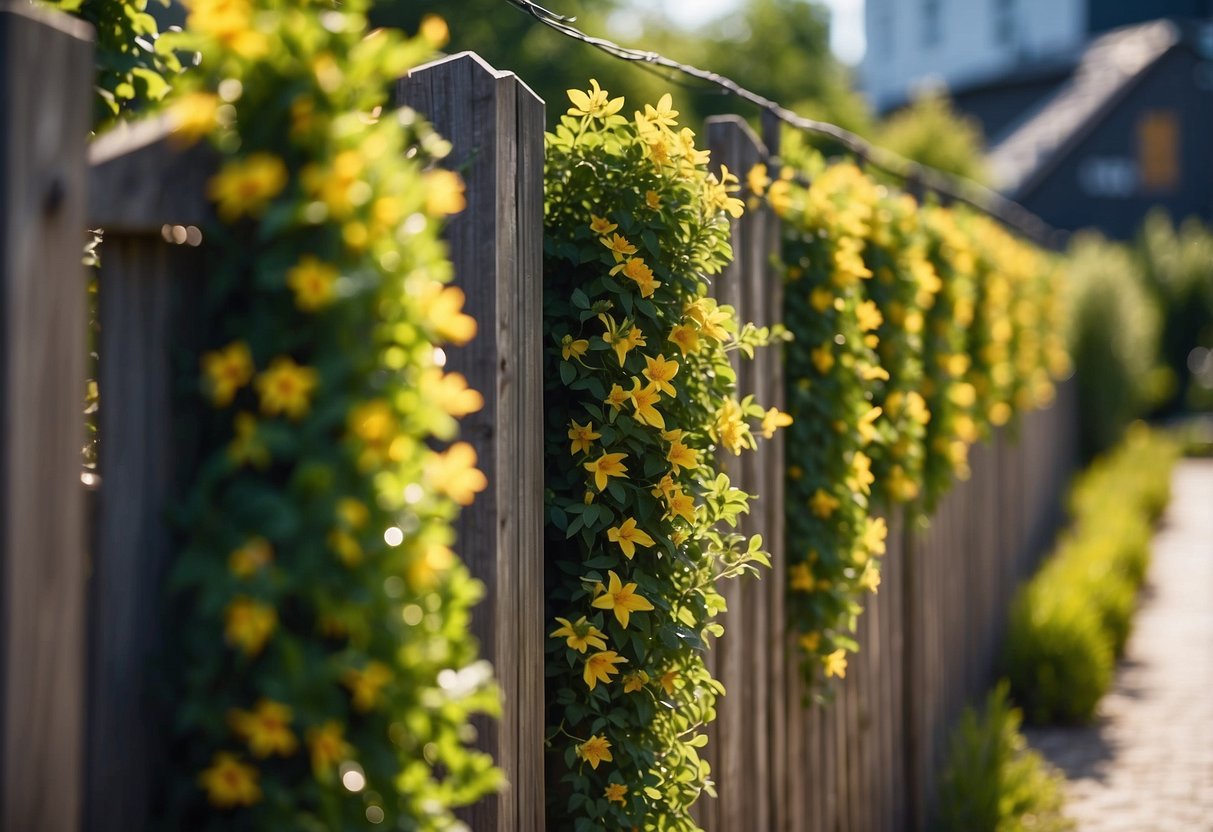Garden Fence Ideas: Stylish Ways to Enclose Your Space
Are you looking to add charm or functionality to your garden? A garden fence can be the perfect solution. Whether you need a barrier to keep animals out or simply want to create a defined area in your yard, there are countless options to explore.

Discover different styles and materials that can enhance the look and feel of your outdoor space. From classic wood to modern metal designs, a well-chosen fence can transform your garden into a beautiful and serene area.
1) Wooden Lattice Panels

Wooden lattice panels can add charm and elegance to your garden. They provide privacy while still allowing light and air to pass through.
Popular options like cedar are known for their durability and natural beauty. You can use lattice panels as part of a fence or to create a stylish garden backdrop.
The design possibilities are endless. You can choose between tighter lattice for more privacy or wider gaps for a more open feel. Square and diamond patterns are both versatile choices that enhance any garden space.
Explore more wooden lattice ideas here.
2) Vinyl Privacy Fence

Vinyl privacy fences are great for creating a secluded space in your garden. They are durable and require minimal maintenance. You won’t need to worry about painting or staining them.
These fences come in various styles and colors to match your home’s aesthetic. They also provide excellent protection and can withstand harsh weather.
For added style, you can combine vinyl with other materials like wood or stone. This combination can enhance the look of your garden even further. For ideas, check out these privacy fence ideas.
3) Recycled Metal Art Fence

Using recycled metal for your fence adds a unique and eco-friendly touch. You can find old metal items like bike parts or hardware and turn them into creative art pieces.
Consider hanging metal wall art or creating patterns with scrap metal. This not only looks stunning but also promotes sustainability.
Recycled metal art can weather over time, giving your fence a rustic, industrial look. It’s a fantastic way to incorporate green practices into your garden design! For more ideas, check out Recycled Metal Yard Art.
4) Bamboo Garden Fence

A bamboo garden fence is a stylish way to add privacy to your yard. Bamboo is known for its strength and flexibility. This makes it a great choice for fencing.
You can find many creative designs. A bamboo lattice fence can add an elegant touch to your garden. It’s not just functional, but also beautiful.
Maintaining bamboo is easy. Just wash it occasionally and apply a sealant to protect it. The natural look of bamboo blends well with any garden.
For more ideas and inspiration, check out these bamboo fence ideas.
5) Stone Wall Edging

Stone wall edging adds a natural and timeless look to your garden. You can use different kinds of stones to match your garden style.
One popular option is a dry stack stone wall. This type involves stacking stones without mortar, creating a classic and durable border.
For a more polished look, consider using river stones. They work well for garden borders and can pair nicely with solar garden lanterns for added charm.
6) Pallet Garden Fence

Building a pallet garden fence is an easy and cost-effective way to add charm to your yard.
You can use repurposed wood pallets to create a rustic look. Simply line up the pallets and attach them with bolts or nails.
For extra creativity, consider painting the pallets or adding small planters. This adds both color and greenery to your fence.
Creating a gate is simple too. Measure the space, cut a pallet to fit, and attach hinges to one side.
Explore more ideas on pallet fences at Off Grid World and DIY Crafts.
7) Living Green Wall

A living green wall adds a vibrant touch to your garden, creating a lush, vertical space.
This type of garden fence uses plants to cover a structure, blending beauty with functionality.
Opt for plants like ivy, ferns, or mosses for an easy-to-maintain and stunning look.
A green wall can improve air quality and provide a natural habitat for wildlife. For more ideas, visit these natural living fences and living privacy fences.
8) Rustic Log Fence

A rustic log fence brings a charming look to your garden. Made from natural wood, it blends perfectly with outdoor settings.
You can use logs of different sizes for a natural feel. This type of fence works well with rustic or country-style gardens.
It’s easy to install and doesn’t require much maintenance. It adds character and a sense of history to your space. For more ideas and inspiration, you can check out this collection of rustic fence ideas.
9) Concrete Block Fence

Concrete block fences are both sturdy and affordable. They provide excellent privacy and security for your garden. You can paint them any color to match your yard’s theme.
Adding wooden accents can give them a softer look and feel. This combination blends the industrial strength of concrete with the natural beauty of wood. It’s a great way to enhance your outdoor space.
10) Woven Willow Fence

A woven willow fence can add a rustic charm to your garden. The natural material blends well with outdoor settings.
It’s also versatile and can be shaped into various designs. You can create arches, screens, or even living structures.
For a DIY project, woven willow fences are simple. Using twine or wire, you can weave the branches together. Check out some inspiring ideas to get started!
Planning Your Garden Fence

Planning your garden fence involves two key aspects: selecting the right materials and understanding local regulations. Each of these steps plays a crucial role in creating a functional and beautiful garden fence.
Choosing the Right Materials
When planning your garden fence, picking the right materials is very important. Your choice will impact the fence’s durability, appearance, and maintenance needs. Wood, metal, vinyl, and wire are common materials.
Wood is a classic option that offers a natural look. Cedar and redwood are popular because they resist rot. Regular maintenance like staining or painting is needed.
Metal fences provide an industrial and modern look. Wrought iron and aluminum are strong options that require less upkeep. However, they can be more expensive.
Vinyl fences are long-lasting and require minimal maintenance. They come in various styles and colors, which can mimic wood. They are more resistant to weather but can be less environmentally friendly.
Wire fencing, such as chicken wire, is practical for keeping out small animals. It’s affordable and easy to install. This option is good for vegetable gardens and areas needing extra protection.
Understanding Local Regulations
Before installing your garden fence, it’s essential to know your local regulations. Many areas have rules affecting the height, style, and placement of garden fences.
Check with your city or municipal office to get information about permits. Some areas require a permit for fences over a certain height.
Review any homeowners’ association (HOA) rules as well. HOAs often have specific guidelines on materials, colors, and fence designs. You may need to submit plans for approval.
Consider your neighbors. Some areas have regulations about how close your fence can be to property lines. Talking with your neighbors can help avoid disputes.
By choosing the right materials and ensuring your fence complies with local regulations, you’ll be well on your way to building a beautiful and functional garden fence.
Design and Aesthetics

Each garden fence design combines plants and greenery with the right colors and styles to create a stunning effect.
Incorporating Plants and Greenery
Adding plants to your fence can enhance the look of your garden. Climbing plants like ivy or roses can create a lush, green wall. For a more colorful display, consider flowering vines such as clematis or wisteria.
You can also use planters attached to the fence. This allows you to grow flowers, herbs, or small shrubs directly on your fence. Using a mix of different plants can add variety and interest.
Trellises are another great option. They provide support for climbing plants and add an intricate design element to the fence. Wooden, metal, or vinyl trellises can match the style of your fence while benefiting your plants.
Vertical gardens are becoming popular too. These setups involve growing plants on panels that are fixed to your fence, creating a green, living wall that looks impressive and maximizes space.
Color and Style Coordination
Your garden fence should complement the style and color scheme of your garden. A wooden fence painted in natural tones can blend with greenery, providing a rustic feel. For a modern look, consider sleek materials like metal or vinyl in neutral colors.
Think about the overall aesthetics of your yard. A white picket fence offers a classic, timeless appeal. More contemporary designs might use bold colors or mixed materials like wood and steel.
Staining your wooden fence can enhance its color while protecting it from weather damage. Choose stains that match your garden’s color palette.
Adding decorative elements like finials or post caps can also elevate the style. These little details can be customized to match your personal taste, creating a cohesive and attractive garden fence.
For more creative ideas, check out these garden fence ideas and designs to elevate your outdoor space.
Maintenance Tips

Keeping your garden fence in top shape doesn’t have to be a chore. Here are some easy tips to help you:
Regular Inspections
Check your fence every few months for any signs of damage like loose screws, broken panels, or rust. Spotting issues early can save you from bigger repairs later.
Cleaning
Wash your fence regularly to prevent mold and mildew. You can use a mix of water and mild detergent. For stubborn spots, a gentle scrub with a brush should do the trick.
Painting and Staining
Repaint or re-stain your wooden fence every couple of years to protect it from the elements. This helps to prevent rot and keeps the wood looking fresh and vibrant.
Grease Metal Parts
If your fence has metal hinges or latches, apply a bit of grease to keep them from rusting and ensure they move smoothly. Use a dry cloth to wipe away any excess grease.
| Task | Frequency |
|---|---|
| Inspect for damage | Every few months |
| Clean the fence | Twice a year |
| Repaint or re-stain | Every 2-3 years |
| Grease metal parts | Annually |
Address Plant Growth
Trim plants or vines growing on your fence. While they can look beautiful, they may cause damage or add extra weight. Keeping them in check will help your fence last longer.
Fix Immediately
If you notice any damage, fix it right away. Small issues like a loose board or a tiny crack can quickly become major problems if left unattended.
By following these simple tips, you’ll keep your garden fence looking great and standing strong for years to come.







